ENiM 6 - 2013 (ISSN 2102-6629)
Sommaire
Pages
1-26
 Ă lâinstar du thĂ©onyme « Seth », le thĂ©onyme « Horus » est Ă©minemment polysĂ©mique. FondĂ© sur lâanalyse de plus de 900 attestations dans les Textes des Pyramides, cet article tente de classifier les diffĂ©rents rĂ©fĂ©rents thĂ©ologiques, depuis le modĂšle archaĂŻque, Ă portĂ©e historiographique, dâHorus de HiĂ©raconpolis jusquâĂ lâĂ©laboration de la figure dâHorus lâenfant hĂ©ritier de son pĂšre Osiris. Au-delĂ du discours religieux, comme toujours, se laissent deviner les Ă©volutions dâune pensĂ©e politique et les lourdes implications idĂ©ologiques de la diffusion du dogme osirien.
Ă lâinstar du thĂ©onyme « Seth », le thĂ©onyme « Horus » est Ă©minemment polysĂ©mique. FondĂ© sur lâanalyse de plus de 900 attestations dans les Textes des Pyramides, cet article tente de classifier les diffĂ©rents rĂ©fĂ©rents thĂ©ologiques, depuis le modĂšle archaĂŻque, Ă portĂ©e historiographique, dâHorus de HiĂ©raconpolis jusquâĂ lâĂ©laboration de la figure dâHorus lâenfant hĂ©ritier de son pĂšre Osiris. Au-delĂ du discours religieux, comme toujours, se laissent deviner les Ă©volutions dâune pensĂ©e politique et les lourdes implications idĂ©ologiques de la diffusion du dogme osirien.
 Just as « Seth » appears to be, the god name « Horus » is an highly polysemic character. Through the analysis of over 900 occurrences in the Pyramid Texts, this paper attempts to classify the various theological referents, from the archaic model of Horus of Hieraconpolis â built for historiographical purpose â to the development of the character of Horus the child, heir of his father Osiris. Beyond the religious discourse, as usual, one can guess the trends of a political thought and the heavy ideological implications of the spread of the Osirian dogma.
Just as « Seth » appears to be, the god name « Horus » is an highly polysemic character. Through the analysis of over 900 occurrences in the Pyramid Texts, this paper attempts to classify the various theological referents, from the archaic model of Horus of Hieraconpolis â built for historiographical purpose â to the development of the character of Horus the child, heir of his father Osiris. Beyond the religious discourse, as usual, one can guess the trends of a political thought and the heavy ideological implications of the spread of the Osirian dogma.
Pages
27-32
 Publication dâune statuette privĂ©e dĂ©couverte en 1991 lors des fouilles du Conseil SuprĂȘme des AntiquitĂ©s Ă Atfih et conservĂ©e actuellement dans le magasin archĂ©ologique du site. Des dĂ©tails stylistiques et Ă©pigraphiques de cette statuette fragmentaire assise permettent de la dater du dĂ©but du Nouvel Empire. Les textes conservent une formule dâoffrandes adressĂ©e Ă Hathor maĂźtresse dâAtfih â premiĂšre occurrence sur un monument dĂ©couvert in situ â au profit de son dĂ©dicant Hor, dont la lecture des deux titres est malheureusement lacunaire et incertaine.
Publication dâune statuette privĂ©e dĂ©couverte en 1991 lors des fouilles du Conseil SuprĂȘme des AntiquitĂ©s Ă Atfih et conservĂ©e actuellement dans le magasin archĂ©ologique du site. Des dĂ©tails stylistiques et Ă©pigraphiques de cette statuette fragmentaire assise permettent de la dater du dĂ©but du Nouvel Empire. Les textes conservent une formule dâoffrandes adressĂ©e Ă Hathor maĂźtresse dâAtfih â premiĂšre occurrence sur un monument dĂ©couvert in situ â au profit de son dĂ©dicant Hor, dont la lecture des deux titres est malheureusement lacunaire et incertaine.
 Publication of a private statuette discovered in 1991 during the excavations of the Supreme Council of Antiquities in Atfih currently kept in the archaeological store of the site. Stylistic and epigraphical details of this fragmentary seated statuette suggest a date at the beginning of the New Kingdom. The texts include an offering formula addressed to Hathor mistress of Atfih â the first occurrence on a monument found in situ â for the benefit of its owner Hor, whose two titles are unfortunately lacunar and uncertain.
Publication of a private statuette discovered in 1991 during the excavations of the Supreme Council of Antiquities in Atfih currently kept in the archaeological store of the site. Stylistic and epigraphical details of this fragmentary seated statuette suggest a date at the beginning of the New Kingdom. The texts include an offering formula addressed to Hathor mistress of Atfih â the first occurrence on a monument found in situ â for the benefit of its owner Hor, whose two titles are unfortunately lacunar and uncertain.
Pages
33-78
 Du lointain Orient, les Ăgyptiens ont importĂ© une plante et sa graine qui Ă©taient rĂ©putĂ©es avoir des vertus anaphrodisiaques et qui leur paraissaient, de ce fait, avoir des propriĂ©tĂ©s anti-sĂ©thiennes. VouĂ©es pour cette raison Ă Osiris, elles furent employĂ©es pour assurer la protection de la momie contre le dieu Seth mais aussi pour protĂ©ger le mĂ©decin qui affrontait les dĂ©mons des maladies liguĂ©s par ce dieu et mis au service du redoutable dieu Khonsou.
Du lointain Orient, les Ăgyptiens ont importĂ© une plante et sa graine qui Ă©taient rĂ©putĂ©es avoir des vertus anaphrodisiaques et qui leur paraissaient, de ce fait, avoir des propriĂ©tĂ©s anti-sĂ©thiennes. VouĂ©es pour cette raison Ă Osiris, elles furent employĂ©es pour assurer la protection de la momie contre le dieu Seth mais aussi pour protĂ©ger le mĂ©decin qui affrontait les dĂ©mons des maladies liguĂ©s par ce dieu et mis au service du redoutable dieu Khonsou.
 The Egyptians imported, from the Far East, a plant together with its seed that is known for its anaphrodisiac powers, and thus seemed to have anti-Sethian properties. Being dedicated, for that reason, to Osiris, they were used to ensure the protection of the mummy from the god Seth as well as protecting the physician who was dealing with the demons of the diseases associated with that god and placed at the service of the dreadful god Khonsu.
The Egyptians imported, from the Far East, a plant together with its seed that is known for its anaphrodisiac powers, and thus seemed to have anti-Sethian properties. Being dedicated, for that reason, to Osiris, they were used to ensure the protection of the mummy from the god Seth as well as protecting the physician who was dealing with the demons of the diseases associated with that god and placed at the service of the dreadful god Khonsu.
Pages
79-91
 Analyse dâun thĂšme littĂ©raire â le ciel de SinouhĂ© â, thĂ©matisĂ© Ă plusieurs endroits du conte de SinouhĂ©.
Analyse dâun thĂšme littĂ©raire â le ciel de SinouhĂ© â, thĂ©matisĂ© Ă plusieurs endroits du conte de SinouhĂ©.
 Analysis of a literary theme â the sky of Sinuhe â, thematized in several places of the tale of Sinuhe.
Analysis of a literary theme â the sky of Sinuhe â, thematized in several places of the tale of Sinuhe.
Pages
93-122
 La prĂ©sente communication traite dâun petit groupe de sept cippes dâHorus dâĂ©poque libyenne, dont certains proviennent sĂ»rement de ThĂšbes. Ă lâavant de la stĂšle, sur la plinthe, sous lâhabituelle reprĂ©sentation dâHorus en relief empoignant les animaux dangereux et piĂ©tinant les crocodiles, sâĂ©tend une scĂšne en deux dimensions. Elle Ă©voque le dieu-adolescent Ched-le-Sauveur montant un char lancĂ© dans le dĂ©sert, menĂ© par un BĂšs-aurige, et dont lâattelage â deux griffons monstrueux â culbute des crocodiles agressifs tandis que Ched dĂ©coche des flĂšches sur un ensemble de bĂȘtes nuisibles, notamment un nombre variable de serpents longs (ĂlapidĂ©s et ColubridĂ©s) ou courts (VipĂ©ridĂ©s). Ă ces serpents correspond un Ă©ventail de noms magiques diffĂ©rents, quatorze au total. Lâexamen permet de conclure que ces appellations se rapporteraient, plutĂŽt quâĂ des noms de serpents, Ă une diversitĂ© de dangers spĂ©cifiques causĂ©s par les serpents que lâon souhaiterait conjurer en sâadressant au dieu. Il sây ajoute une sĂ©rie de remarques au sujet de la stĂšle du MusĂ©e Pouchkine I.1a.4492 (1899), qui, en dĂ©pit de lâabsence de scĂšnes similaires Ă celles du groupe prĂ©cĂ©dent, pourrait Ă©clairer dâun jour nouveau certaines croyances thĂ©baines se rapportant aux serpents.
La prĂ©sente communication traite dâun petit groupe de sept cippes dâHorus dâĂ©poque libyenne, dont certains proviennent sĂ»rement de ThĂšbes. Ă lâavant de la stĂšle, sur la plinthe, sous lâhabituelle reprĂ©sentation dâHorus en relief empoignant les animaux dangereux et piĂ©tinant les crocodiles, sâĂ©tend une scĂšne en deux dimensions. Elle Ă©voque le dieu-adolescent Ched-le-Sauveur montant un char lancĂ© dans le dĂ©sert, menĂ© par un BĂšs-aurige, et dont lâattelage â deux griffons monstrueux â culbute des crocodiles agressifs tandis que Ched dĂ©coche des flĂšches sur un ensemble de bĂȘtes nuisibles, notamment un nombre variable de serpents longs (ĂlapidĂ©s et ColubridĂ©s) ou courts (VipĂ©ridĂ©s). Ă ces serpents correspond un Ă©ventail de noms magiques diffĂ©rents, quatorze au total. Lâexamen permet de conclure que ces appellations se rapporteraient, plutĂŽt quâĂ des noms de serpents, Ă une diversitĂ© de dangers spĂ©cifiques causĂ©s par les serpents que lâon souhaiterait conjurer en sâadressant au dieu. Il sây ajoute une sĂ©rie de remarques au sujet de la stĂšle du MusĂ©e Pouchkine I.1a.4492 (1899), qui, en dĂ©pit de lâabsence de scĂšnes similaires Ă celles du groupe prĂ©cĂ©dent, pourrait Ă©clairer dâun jour nouveau certaines croyances thĂ©baines se rapportant aux serpents.
 This paper deals with a small group of seven âCippi of Horusâ (dating from the « Libyan » epoch), some of which surely come from Thebes. In front of the cippus, on the plinth and under the usual in relief representation of Horus seizing dangerous animals and trampling on crocodiles, is reproduced a scene in two dimensions. It evokes the adolescent god Shed-the-Saviour riding in a chariot driven at full speed in the desert, led by Bes as a charioteer. The chariot is pulled by a team of two monstrous griffins knocking aggressive crocodiles over while Shed shoots arrows at a set of dangerous animals, including a variable number of long (Colubridae and Elapidae) or short snakes (Viperidae). Fourteen different magic names are attached to these snakes. A close scrutiny of these names lead to the conclusion that they refer more to the various specific dangers caused by snakebites which one would wish to ward off by addressing the god, than to the names of the snakes per se. A series of remarks are added to about the Puskin Museum stele I.1a.4492 (1899), which, despite the absence of similar scenes to the previous ones, could shed new light on certain Theban beliefs relating to snakes.
This paper deals with a small group of seven âCippi of Horusâ (dating from the « Libyan » epoch), some of which surely come from Thebes. In front of the cippus, on the plinth and under the usual in relief representation of Horus seizing dangerous animals and trampling on crocodiles, is reproduced a scene in two dimensions. It evokes the adolescent god Shed-the-Saviour riding in a chariot driven at full speed in the desert, led by Bes as a charioteer. The chariot is pulled by a team of two monstrous griffins knocking aggressive crocodiles over while Shed shoots arrows at a set of dangerous animals, including a variable number of long (Colubridae and Elapidae) or short snakes (Viperidae). Fourteen different magic names are attached to these snakes. A close scrutiny of these names lead to the conclusion that they refer more to the various specific dangers caused by snakebites which one would wish to ward off by addressing the god, than to the names of the snakes per se. A series of remarks are added to about the Puskin Museum stele I.1a.4492 (1899), which, despite the absence of similar scenes to the previous ones, could shed new light on certain Theban beliefs relating to snakes.
Pages
123-137
 Les descriptions de lâapparence physique des personnages sont partie intĂ©grante de la « caractĂ©risation » dans lâĂ©criture littĂ©raire. Les auteurs de lâAncienne Ăgypte Ă©taient trĂšs Ă©conomes dans lâutilisation de telles descriptions. Quand de tels passages Ă©taient insĂ©rĂ©s dans leurs histoires, ils fonctionnaient comme des dispositifs littĂ©raires contribuant Ă la « caractĂ©risation », aussi bien quâau dĂ©ploiement de la trame narrative et aidait le public Ă mieux comprendre les actions des personnages. Dans cet essai sont identifiĂ©es les rĂ©fĂ©rences au physique des personnages littĂ©raires dans un corpus de rĂ©cits Ă©gyptiens choisis, comme les contes du P. Westcar ou lâhistoire de SinouhĂ©, et elles sont examinĂ©es comme des Ă©lĂ©ments stylistiques de lâĂ©criture narrative Ă©gyptienne dans le cadre de la thĂ©orie littĂ©raire. Par cette Ă©tude, on essaye dâĂ©clairer quelque peu la maniĂšre dont ces rĂ©cits furent composĂ©s et rendus sĂ©duisants Ă leur public.
Les descriptions de lâapparence physique des personnages sont partie intĂ©grante de la « caractĂ©risation » dans lâĂ©criture littĂ©raire. Les auteurs de lâAncienne Ăgypte Ă©taient trĂšs Ă©conomes dans lâutilisation de telles descriptions. Quand de tels passages Ă©taient insĂ©rĂ©s dans leurs histoires, ils fonctionnaient comme des dispositifs littĂ©raires contribuant Ă la « caractĂ©risation », aussi bien quâau dĂ©ploiement de la trame narrative et aidait le public Ă mieux comprendre les actions des personnages. Dans cet essai sont identifiĂ©es les rĂ©fĂ©rences au physique des personnages littĂ©raires dans un corpus de rĂ©cits Ă©gyptiens choisis, comme les contes du P. Westcar ou lâhistoire de SinouhĂ©, et elles sont examinĂ©es comme des Ă©lĂ©ments stylistiques de lâĂ©criture narrative Ă©gyptienne dans le cadre de la thĂ©orie littĂ©raire. Par cette Ă©tude, on essaye dâĂ©clairer quelque peu la maniĂšre dont ces rĂ©cits furent composĂ©s et rendus sĂ©duisants Ă leur public.
 Descriptions of charactersâ physical appearance are an integral part of characterization in literary writing. Ancient Egyptian authors were highly economical in the use of such descriptions. When such passages were inserted in their stories, they functioned as literary devices contributing to characterization, as well as moving the narrative plot forward and helping the audience understand better the charactersâ actions. In this essay I identify references to literary charactersâ physical appearance and attire in a corpus of selected Egyptian narratives, such as the Tales of Wonder and the story of Sinuhe, and I examine them as stylistic elements of Egyptian narrative writing, against the background of Literary Theory. Through this study I attempt to shed some light onto the ways in which Egyptian narratives were composed and appealed to their ancient audiences.
Descriptions of charactersâ physical appearance are an integral part of characterization in literary writing. Ancient Egyptian authors were highly economical in the use of such descriptions. When such passages were inserted in their stories, they functioned as literary devices contributing to characterization, as well as moving the narrative plot forward and helping the audience understand better the charactersâ actions. In this essay I identify references to literary charactersâ physical appearance and attire in a corpus of selected Egyptian narratives, such as the Tales of Wonder and the story of Sinuhe, and I examine them as stylistic elements of Egyptian narrative writing, against the background of Literary Theory. Through this study I attempt to shed some light onto the ways in which Egyptian narratives were composed and appealed to their ancient audiences.
Pages
139-158
 Bata, seigneur de Saka et hĂ©ros du cĂ©lĂšbre conte des Deux FrĂšres, est une divinitĂ© du panthĂ©on Ă©gyptien dont la nature animale reste difficile Ă cerner. En effet, il semble avoir primitivement revĂȘtu la forme dâun bĂ©lier avant de se transformer en taureau au cours du Nouvel Empire. Toutefois, un nouvel examen de la documentation gĂ©nĂ©ralement attribuĂ©e Ă ce dieu, associĂ© Ă lâĂ©tude des sources Ă©pigraphiques relatives Ă sa forme animale nous amĂšnent Ă conclure quâil nâa vraisemblablement jamais pris lâaspect dâun bĂ©lier mais quâil a toujours Ă©tĂ© un taureau.
Bata, seigneur de Saka et hĂ©ros du cĂ©lĂšbre conte des Deux FrĂšres, est une divinitĂ© du panthĂ©on Ă©gyptien dont la nature animale reste difficile Ă cerner. En effet, il semble avoir primitivement revĂȘtu la forme dâun bĂ©lier avant de se transformer en taureau au cours du Nouvel Empire. Toutefois, un nouvel examen de la documentation gĂ©nĂ©ralement attribuĂ©e Ă ce dieu, associĂ© Ă lâĂ©tude des sources Ă©pigraphiques relatives Ă sa forme animale nous amĂšnent Ă conclure quâil nâa vraisemblablement jamais pris lâaspect dâun bĂ©lier mais quâil a toujours Ă©tĂ© un taureau.
 Bata, lord of Saka and hero of the famous tale of Two Brothers, is a deity of the egyptian pantheon whose animalâs nature remains difficult to define. Indeed, he seems to have originally assume the shape of a ram before being turned into a bull during the New Kingdom. However, a new examination of the documentation commonly assign to this god joined with the study of epigraphic sources related to his animal shape lead us to conclude that he has most likely never taken the appearance of a ram but that he has always been a bull.
Bata, lord of Saka and hero of the famous tale of Two Brothers, is a deity of the egyptian pantheon whose animalâs nature remains difficult to define. Indeed, he seems to have originally assume the shape of a ram before being turned into a bull during the New Kingdom. However, a new examination of the documentation commonly assign to this god joined with the study of epigraphic sources related to his animal shape lead us to conclude that he has most likely never taken the appearance of a ram but that he has always been a bull.
Pages
159-168
 Ădition du papyrus de Lyon MusĂ©e des Beaux-Arts H 2425, document datant de lâĂ©poque ptolĂ©maĂŻque rĂ©digĂ© en hiĂ©ratique avec la formule 100 du Livre des morts accompagnĂ©e de son illustration. LâĂ©tude de ce manuscrit donne lâoccasion de revenir sur la fonction et lâutilisation de cette catĂ©gorie dâobjets en contexte funĂ©raire.
Ădition du papyrus de Lyon MusĂ©e des Beaux-Arts H 2425, document datant de lâĂ©poque ptolĂ©maĂŻque rĂ©digĂ© en hiĂ©ratique avec la formule 100 du Livre des morts accompagnĂ©e de son illustration. LâĂ©tude de ce manuscrit donne lâoccasion de revenir sur la fonction et lâutilisation de cette catĂ©gorie dâobjets en contexte funĂ©raire.
 Edition of the papyrus Lyon Musée des Beaux-Arts H 2425, which can be dated to the Ptolemaic period. It is written in hieratic and contains the Spell 100 of the Book of the Dead with her illustration. The study of this manuscript allows us to reconsider the function and use of this category of objects in funerary context.
Edition of the papyrus Lyon Musée des Beaux-Arts H 2425, which can be dated to the Ptolemaic period. It is written in hieratic and contains the Spell 100 of the Book of the Dead with her illustration. The study of this manuscript allows us to reconsider the function and use of this category of objects in funerary context.
Pages
169-176
 En se fondant sur deux reprĂ©sentations du temple Hibis, les cĂ©ramologues ont longtemps supposĂ© que le tour de potier Ă pied rapide nâest apparu en Ăgypte quâĂ la pĂ©riode saĂŻto-perse. Une figuration dĂ©taillĂ©e de Khnoum provenant dâune inscription de RamsĂšs II au temple de Louqsor rĂ©cemment dĂ©couverte indique, cependant, que cette technologie Ă©tait dĂ©jĂ utilisĂ©e au Nouvel Empire.
En se fondant sur deux reprĂ©sentations du temple Hibis, les cĂ©ramologues ont longtemps supposĂ© que le tour de potier Ă pied rapide nâest apparu en Ăgypte quâĂ la pĂ©riode saĂŻto-perse. Une figuration dĂ©taillĂ©e de Khnoum provenant dâune inscription de RamsĂšs II au temple de Louqsor rĂ©cemment dĂ©couverte indique, cependant, que cette technologie Ă©tait dĂ©jĂ utilisĂ©e au Nouvel Empire.
 Based on two representations from Hibis temple, ceramicists have long assumed that a fast kick wheel did not appear in Egypt until the Saite-Persian period. A detailed representation of Khnum from the recently uncovered building inscription of Ramesses II at Luxor temple, however, indicates that this technology was already in use during the New Kingdom.
Based on two representations from Hibis temple, ceramicists have long assumed that a fast kick wheel did not appear in Egypt until the Saite-Persian period. A detailed representation of Khnum from the recently uncovered building inscription of Ramesses II at Luxor temple, however, indicates that this technology was already in use during the New Kingdom.
Pages
177-203
 Les enquĂȘtes menĂ©es sur lâADN des momies royales publiĂ©es en 2010 ont fourni des matĂ©riaux pour un nouvel arbre gĂ©nĂ©alogique de la famille royales de la fin de la XVIIIe dynastie. AprĂšs avoir discutĂ© de la fiabilitĂ© de ces Ă©tudes, un examen approfondi des rĂ©sultats conduit Ă la conclusion que certains liens de parentĂ© rĂ©vĂ©lĂ©s par lâADN ont Ă©chappĂ© Ă lâĂ©quipe de gĂ©nĂ©ticiens. Le plus significatif de ceux-ci consiste dans le fait que Youya partage avec son gendre Amenhotep III environ 1/3 de son patrimoine gĂ©nĂ©tique. Il est proposĂ©, en consĂ©quence, que Youya ait Ă©tĂ© un oncle dâAmenhotep III, ce qui signifie que Tiyi Ă©tait une cousine germaine de son mari. En extrapolant pour la gĂ©nĂ©ration suivante, on suggĂšre quâAmenhotep IV â Akhenaton a Ă©galement Ă©pousĂ©e sa propre cousine, Nefertiti, dont les parents Ă©taient liĂ©es Ă la fois Ă Youya et Amenhotep III. Ceci expliquerait pourquoi lâADN dâAmenhotep IV â Akhenaton (momie de KV 55) et celui de Nefertiti, identifiĂ©e, Ă la Young Lady de la tombe dâAmenhotep II (KV35YL) aient pu sembler ceux dâun frĂšre et dâune sĆur. En accord avec les tĂ©moignages Ă©crits de nouveau examinĂ©s en dĂ©tail, Toutankhamon est considĂ©rĂ© comme le septiĂšme et dernier enfant dâAmenhotep IV â Akhenaton et Nefertiti et, de son cĂŽtĂ©, la momie KV21A est donnĂ©e comme vraisemblablement celle de Moutemouiya. Un nouvel arbre gĂ©nĂ©alogique, fondĂ© sur ces donnĂ©es ADN et Ă©pigraphiques est proposĂ© en conclusion.
Les enquĂȘtes menĂ©es sur lâADN des momies royales publiĂ©es en 2010 ont fourni des matĂ©riaux pour un nouvel arbre gĂ©nĂ©alogique de la famille royales de la fin de la XVIIIe dynastie. AprĂšs avoir discutĂ© de la fiabilitĂ© de ces Ă©tudes, un examen approfondi des rĂ©sultats conduit Ă la conclusion que certains liens de parentĂ© rĂ©vĂ©lĂ©s par lâADN ont Ă©chappĂ© Ă lâĂ©quipe de gĂ©nĂ©ticiens. Le plus significatif de ceux-ci consiste dans le fait que Youya partage avec son gendre Amenhotep III environ 1/3 de son patrimoine gĂ©nĂ©tique. Il est proposĂ©, en consĂ©quence, que Youya ait Ă©tĂ© un oncle dâAmenhotep III, ce qui signifie que Tiyi Ă©tait une cousine germaine de son mari. En extrapolant pour la gĂ©nĂ©ration suivante, on suggĂšre quâAmenhotep IV â Akhenaton a Ă©galement Ă©pousĂ©e sa propre cousine, Nefertiti, dont les parents Ă©taient liĂ©es Ă la fois Ă Youya et Amenhotep III. Ceci expliquerait pourquoi lâADN dâAmenhotep IV â Akhenaton (momie de KV 55) et celui de Nefertiti, identifiĂ©e, Ă la Young Lady de la tombe dâAmenhotep II (KV35YL) aient pu sembler ceux dâun frĂšre et dâune sĆur. En accord avec les tĂ©moignages Ă©crits de nouveau examinĂ©s en dĂ©tail, Toutankhamon est considĂ©rĂ© comme le septiĂšme et dernier enfant dâAmenhotep IV â Akhenaton et Nefertiti et, de son cĂŽtĂ©, la momie KV21A est donnĂ©e comme vraisemblablement celle de Moutemouiya. Un nouvel arbre gĂ©nĂ©alogique, fondĂ© sur ces donnĂ©es ADN et Ă©pigraphiques est proposĂ© en conclusion.
 The investigations carried on the DNA of the royal mummies published in february 2010 have provided material for a new genealogical tree for the royal family of the late XVIIInth dynasty. After discussing the reliability of this study, a close examination of these results leads to the conclusion that some genetical links excaped to the team of geneticians. The most significant being the fact that Yuya shares with his son-in-law Amenhotep III about 1/3 of genetical inheritance. It is consequently proposed that Yuya was an uncle of Amenhotep III, Mutemwiya being his sister. This means that queen Tiyi was in fact an actual cousin of Amenhotep III. Extrapolating to the next generation it is also suggested that Amenhotep IV â Akhenaten equally married his own cousin, Nefertiti, whose parents were related to both Amenhotep III and Yuya. This would explain why the DNA of Amenhotep IV â Akhenaten (mummy KV 55) and that of Nefertiti, identified to mummy KV 35 YL, were looking like that of siblings. It is also suggested that Tutankhamun was the seventh child of Amenhotep IV â Akhenaten and Nefertiti in accordance with some reappraised epigraphic evidences, and that Mutemwiya is no other than the mummy KV21A. A new genealogical tree based on DNA and epigraphic data is given in conclusion.
The investigations carried on the DNA of the royal mummies published in february 2010 have provided material for a new genealogical tree for the royal family of the late XVIIInth dynasty. After discussing the reliability of this study, a close examination of these results leads to the conclusion that some genetical links excaped to the team of geneticians. The most significant being the fact that Yuya shares with his son-in-law Amenhotep III about 1/3 of genetical inheritance. It is consequently proposed that Yuya was an uncle of Amenhotep III, Mutemwiya being his sister. This means that queen Tiyi was in fact an actual cousin of Amenhotep III. Extrapolating to the next generation it is also suggested that Amenhotep IV â Akhenaten equally married his own cousin, Nefertiti, whose parents were related to both Amenhotep III and Yuya. This would explain why the DNA of Amenhotep IV â Akhenaten (mummy KV 55) and that of Nefertiti, identified to mummy KV 35 YL, were looking like that of siblings. It is also suggested that Tutankhamun was the seventh child of Amenhotep IV â Akhenaten and Nefertiti in accordance with some reappraised epigraphic evidences, and that Mutemwiya is no other than the mummy KV21A. A new genealogical tree based on DNA and epigraphic data is given in conclusion.
Pages
205-231
 Cet article prĂ©sente lâhypothĂšse selon laquelle il aurait existĂ© devant le petit temple dâAton, une cour arborĂ©e agrĂ©mentĂ©e dâun bassin en forme de T renversĂ©, amĂ©nagement dĂ©mantelĂ© pour laisser place sous le rĂšgne dâĂnkhkhĂ©pĂ©rourĂȘ au supposĂ© Coronation Hall dit de « SmenkhkarĂȘ ».
La dĂ©monstration se fonde sur deux Ă©tudes comparĂ©es dont les rĂ©sultats ont Ă©tĂ© confrontĂ©s : celle des scĂšnes de remise de « lâor de la rĂ©compense » aux fonctionnaires mĂ©ritants par AkhĂ©naton et NĂ©fertiti et celle des reprĂ©sentations architecturales de temples dans les tombes amarniennes avec les plans des monuments de culte atoniste eux-mĂȘmes et les faits archĂ©ologiques.
Lâarticle sâachĂšve par un essai de reconstitution de cet Ă©tat supposĂ© du petit temple illustrĂ© par des modĂšles numĂ©riques.
Cet article prĂ©sente lâhypothĂšse selon laquelle il aurait existĂ© devant le petit temple dâAton, une cour arborĂ©e agrĂ©mentĂ©e dâun bassin en forme de T renversĂ©, amĂ©nagement dĂ©mantelĂ© pour laisser place sous le rĂšgne dâĂnkhkhĂ©pĂ©rourĂȘ au supposĂ© Coronation Hall dit de « SmenkhkarĂȘ ».
La dĂ©monstration se fonde sur deux Ă©tudes comparĂ©es dont les rĂ©sultats ont Ă©tĂ© confrontĂ©s : celle des scĂšnes de remise de « lâor de la rĂ©compense » aux fonctionnaires mĂ©ritants par AkhĂ©naton et NĂ©fertiti et celle des reprĂ©sentations architecturales de temples dans les tombes amarniennes avec les plans des monuments de culte atoniste eux-mĂȘmes et les faits archĂ©ologiques.
Lâarticle sâachĂšve par un essai de reconstitution de cet Ă©tat supposĂ© du petit temple illustrĂ© par des modĂšles numĂ©riques.
 This article presents the hypothesis that there was a leafy courtyard with a pool in the shape of an inverted T in front of the small Aten temple. Under the reign of ĂnkheperurĂȘ, this courtyard may have been dismantled to make way for the presumed Coronation Hall also known as SmenkhkarĂȘ Hall.
The demonstration is based on two comparative studies: between the rewarding scenes which show the distribution of the « gold of honour » by Akhenaten and Nefertiti, and between the architectural representations of temples from the Amarna tombs with the plans of the Aten temples themselves and archaeological facts.
The article ends with an attempt to rebuild this supposed state of the Small Aten temple by means of digital models.
This article presents the hypothesis that there was a leafy courtyard with a pool in the shape of an inverted T in front of the small Aten temple. Under the reign of ĂnkheperurĂȘ, this courtyard may have been dismantled to make way for the presumed Coronation Hall also known as SmenkhkarĂȘ Hall.
The demonstration is based on two comparative studies: between the rewarding scenes which show the distribution of the « gold of honour » by Akhenaten and Nefertiti, and between the architectural representations of temples from the Amarna tombs with the plans of the Aten temples themselves and archaeological facts.
The article ends with an attempt to rebuild this supposed state of the Small Aten temple by means of digital models.
Pages
233-242
 Ătude du bol en gneiss British Museum EA 4701, qui porte une brĂšve formule protectrice dâAmĂ©nirdis Ire. DâaprĂšs son profil et la pierre utilisĂ©e, et compte tenu de nos connaissances sur la Divine Adoratrice, il y a tout lieu de croire que ce rĂ©cipient provient de la tombe du roi KhĂąsekhemoui Ă Umm el-QaâĂąb (Abydos). Un tel emprunt est certainement Ă mettre en rapport avec le culte dâOsiris, particuliĂšrement important Ă la XXVe dynastie.
Ătude du bol en gneiss British Museum EA 4701, qui porte une brĂšve formule protectrice dâAmĂ©nirdis Ire. DâaprĂšs son profil et la pierre utilisĂ©e, et compte tenu de nos connaissances sur la Divine Adoratrice, il y a tout lieu de croire que ce rĂ©cipient provient de la tombe du roi KhĂąsekhemoui Ă Umm el-QaâĂąb (Abydos). Un tel emprunt est certainement Ă mettre en rapport avec le culte dâOsiris, particuliĂšrement important Ă la XXVe dynastie.
 Study of the gneiss bowl British Museum EA 4701, inscribed with a short protective formula of Amenirdis I. The profile and stone of the artefact, as well as the records left by the Divine Votaress, suggest that this vessel originally came from the royal tomb of Khasekhemwy at Umm el-Qaâab (Abydos). Such a reuse is certainly related to the important worship of Osiris during the 25th Dynasty.
Study of the gneiss bowl British Museum EA 4701, inscribed with a short protective formula of Amenirdis I. The profile and stone of the artefact, as well as the records left by the Divine Votaress, suggest that this vessel originally came from the royal tomb of Khasekhemwy at Umm el-Qaâab (Abydos). Such a reuse is certainly related to the important worship of Osiris during the 25th Dynasty.
Pages
243-256
 La combinaison des deux signes « houe » et « forteresse » rencontrĂ©e sur quelques rares documents, et en particulier sur la palette « du tribut libyen », est gĂ©nĂ©ralement entendue comme reprĂ©sentant un acte de destruction. Toutefois, un certain nombre de chercheurs se sont attachĂ©s depuis quelques dĂ©cennies Ă mettre en dĂ©faut cette interprĂ©tation. Selon eux, il ne fait aucun doute quâil sâagisse dâun acte de fondation. Cet article analyse les arguments avancĂ©s par ces derniers et tente de faire le point sur la question.
La combinaison des deux signes « houe » et « forteresse » rencontrĂ©e sur quelques rares documents, et en particulier sur la palette « du tribut libyen », est gĂ©nĂ©ralement entendue comme reprĂ©sentant un acte de destruction. Toutefois, un certain nombre de chercheurs se sont attachĂ©s depuis quelques dĂ©cennies Ă mettre en dĂ©faut cette interprĂ©tation. Selon eux, il ne fait aucun doute quâil sâagisse dâun acte de fondation. Cet article analyse les arguments avancĂ©s par ces derniers et tente de faire le point sur la question.
 The association of the two signs hoe and fortress found in a few documents, and in particular on the Libyan palette, is generally understood as an act of destruction. However, in the last decades some scholars endeavored to show the wrong of this interpretation. According to them, we deal undoubtedly with a foundation ceremony. This article analyzes the advanced arguments and tries to review the question.
The association of the two signs hoe and fortress found in a few documents, and in particular on the Libyan palette, is generally understood as an act of destruction. However, in the last decades some scholars endeavored to show the wrong of this interpretation. According to them, we deal undoubtedly with a foundation ceremony. This article analyzes the advanced arguments and tries to review the question.
Pages
257-289
 Publication du pLouvre E 5353, dâĂ©poque romaine et de provenance inconnue, rĂ©digĂ© au profit dâune certaine Ḥr-ʿnḫ. Le papyrus dont le dĂ©but manque est aujourdâhui constituĂ© de quatre pages dont la derniĂšre est restĂ©e vierge de toute inscription ou dessin. On lit sur les deux premiĂšres un assez long texte rĂ©digĂ© en hiĂ©ratique, prĂ©cĂ©dĂ© de quelques vignettes empruntĂ©es au Livre des Morts. Introduit par le titre du ch. 125 et quelques sĂ©quences originales dont un emprunt au « grand dĂ©cret Ă©mis pour la province-igeret », ce texte, oĂč interviennent plusieurs officiants, expose un rituel dâexĂ©cration contre Apophis qui se poursuit avec des extraits du ch. 163 du Livre des Morts et de la scĂšne 72 B du rituel de lâouverture de la bouche. Divers indices rĂ©partis dans lâensemble du papyrus invitent Ă penser que les opĂ©rations magiques ici dĂ©crites, bien quâinattendues dans ce contexte funĂ©raire, Ă©taient rĂ©alisĂ©es dans les derniers jours de Khoiak et concouraient comme le reste du texte Ă la renaissance de la dĂ©funte Ă lâinstar dâOsiris.
Publication du pLouvre E 5353, dâĂ©poque romaine et de provenance inconnue, rĂ©digĂ© au profit dâune certaine Ḥr-ʿnḫ. Le papyrus dont le dĂ©but manque est aujourdâhui constituĂ© de quatre pages dont la derniĂšre est restĂ©e vierge de toute inscription ou dessin. On lit sur les deux premiĂšres un assez long texte rĂ©digĂ© en hiĂ©ratique, prĂ©cĂ©dĂ© de quelques vignettes empruntĂ©es au Livre des Morts. Introduit par le titre du ch. 125 et quelques sĂ©quences originales dont un emprunt au « grand dĂ©cret Ă©mis pour la province-igeret », ce texte, oĂč interviennent plusieurs officiants, expose un rituel dâexĂ©cration contre Apophis qui se poursuit avec des extraits du ch. 163 du Livre des Morts et de la scĂšne 72 B du rituel de lâouverture de la bouche. Divers indices rĂ©partis dans lâensemble du papyrus invitent Ă penser que les opĂ©rations magiques ici dĂ©crites, bien quâinattendues dans ce contexte funĂ©raire, Ă©taient rĂ©alisĂ©es dans les derniers jours de Khoiak et concouraient comme le reste du texte Ă la renaissance de la dĂ©funte Ă lâinstar dâOsiris.
 Publication of pLouvre E 5353, of Roman Period and of unknown provenance, written for the benefit of a woman named Ḥr-ʿnḫ. The text, whose beginning is missing, nowadays consists of four pages, the last one left free from any inscription or drawing. On the two first pages, one can read a text, rather long and written in hieratic, preceded by a few illustrations from the Book of the Dead. Introduced by the ch. 125 and some original sequences, among which a short borrowing from the âgreat decree issued for the nome of igeretâ, this text, in which several officiants play a part, includes an execration ritual against Apophis, and goes on with excerpts of ch. 163 of the Book of the Dead, and of (the) scene 72b of the Ritual of opening the mouth. Several clues here and there in the papyrus suggest that the magical rites here described, though unexpected in such a funerary context, were performed during the last days of Khoiak, and contributed, together with the rest of the text, to the deceasedâs rebirth like Osiris.
Publication of pLouvre E 5353, of Roman Period and of unknown provenance, written for the benefit of a woman named Ḥr-ʿnḫ. The text, whose beginning is missing, nowadays consists of four pages, the last one left free from any inscription or drawing. On the two first pages, one can read a text, rather long and written in hieratic, preceded by a few illustrations from the Book of the Dead. Introduced by the ch. 125 and some original sequences, among which a short borrowing from the âgreat decree issued for the nome of igeretâ, this text, in which several officiants play a part, includes an execration ritual against Apophis, and goes on with excerpts of ch. 163 of the Book of the Dead, and of (the) scene 72b of the Ritual of opening the mouth. Several clues here and there in the papyrus suggest that the magical rites here described, though unexpected in such a funerary context, were performed during the last days of Khoiak, and contributed, together with the rest of the text, to the deceasedâs rebirth like Osiris.
ENiM 18 - 2025
5 article(s) - 2 avril 2025.
ENiM 1 à 18 (2008-2025) : 224 articles
4 591 550 téléchargements
9 297 926 consulations.
Index des auteurs

Mots clés

Derniers articles : 
Robert Steven Bianchi
Duplication and Continuity
(ENiM 18, p. 13-36 — 11 mars 2025) 
Frédéric Mougenot
Rénénoutet à la porte de la maison
(ENiM 18, p. 1-12 — 29 janvier 2025) 
CENiM - Mise en ligne des volumes Ă©puisĂ©s : 
 Anne-Sophie von BOMHARD DĂ©cans Ă©gyptiens, CENiM 23, Montpellier, 2020 — (2020)
Anne-Sophie von BOMHARD DĂ©cans Ă©gyptiens, CENiM 23, Montpellier, 2020 — (2020) 
 Jean-Claude Grenier L'Osiris ANTINOOS, CENiM 1, Montpellier, 2008 — (26 dĂ©cembre 2008)
Jean-Claude Grenier L'Osiris ANTINOOS, CENiM 1, Montpellier, 2008 — (26 dĂ©cembre 2008) 
TDENiM - Mise en ligne des volumes Ă©puisĂ©s : 
 Twitter
Twitter 3796949 visites - 3138 visite(s) aujourd’hui - 122 connecté(s)
© ENiM - Une revue d’égyptologie sur internet
Équipe Égypte Nilotique et Méditerranéenne - UMR 5140 - « Archéologie des Sociétés Méditerranéennes » (Cnrs) - Université Paul Valéry - Montpellier III
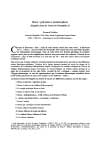
 Télécharger cet article au format pdf
Télécharger cet article au format pdf 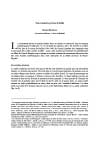
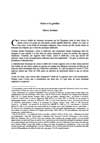
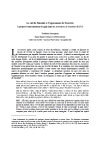
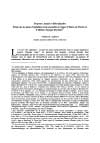
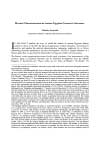
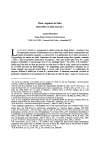
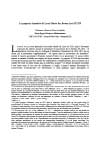
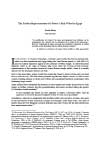
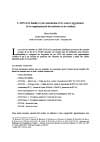
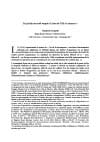
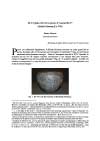
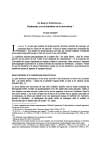
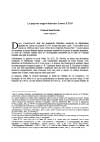





















 Contact
Contact
 Abonnez-vous !
Abonnez-vous ! Équipe Égypte Nilotique et Méditerranéenne
Équipe Égypte Nilotique et Méditerranéenne UMR 5140 « Archéologie des Sociétés Méditerranéennes » (Cnrs)
UMR 5140 « Archéologie des Sociétés Méditerranéennes » (Cnrs) Université Paul Valéry - Montpellier III
Université Paul Valéry - Montpellier III